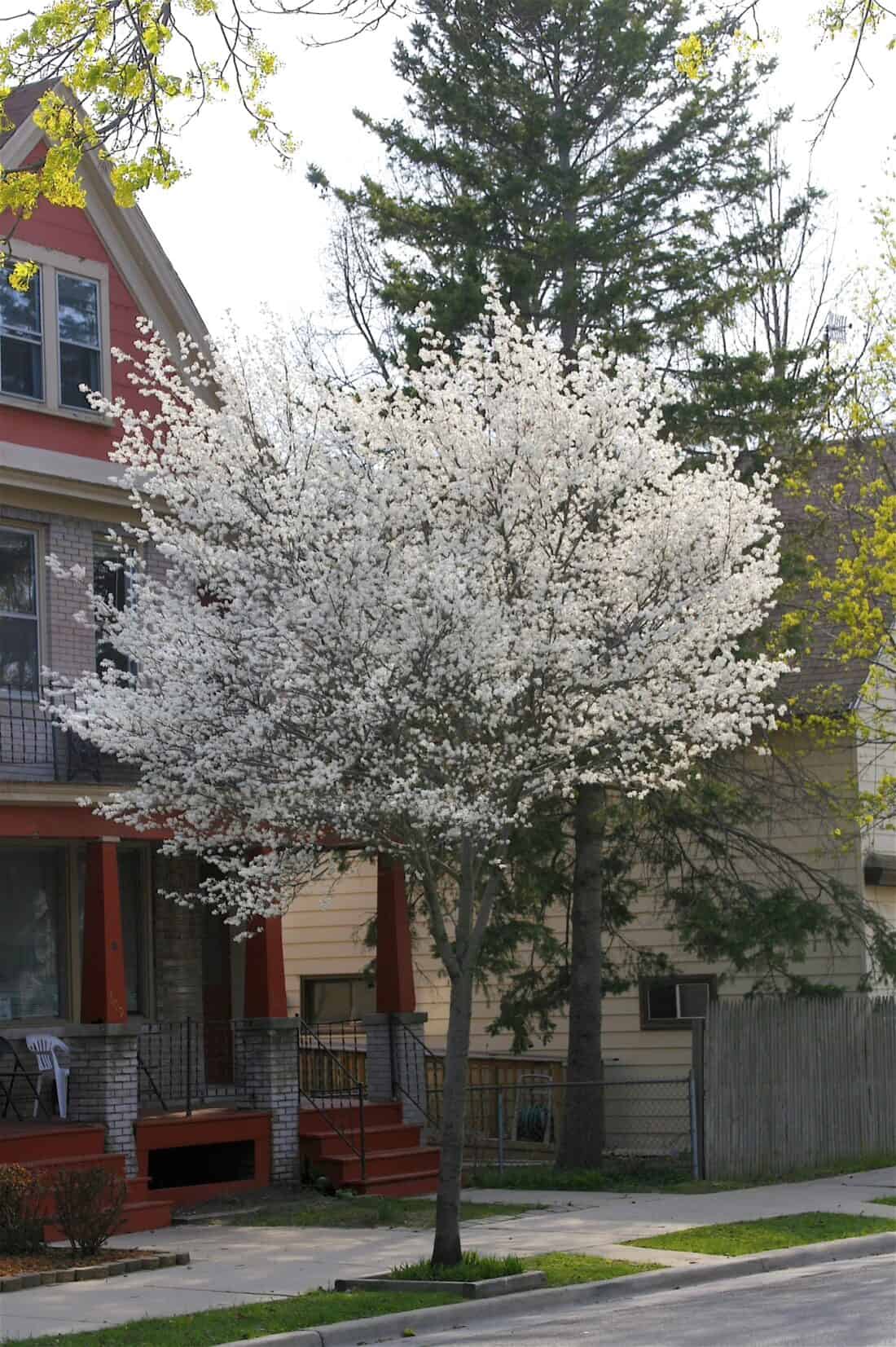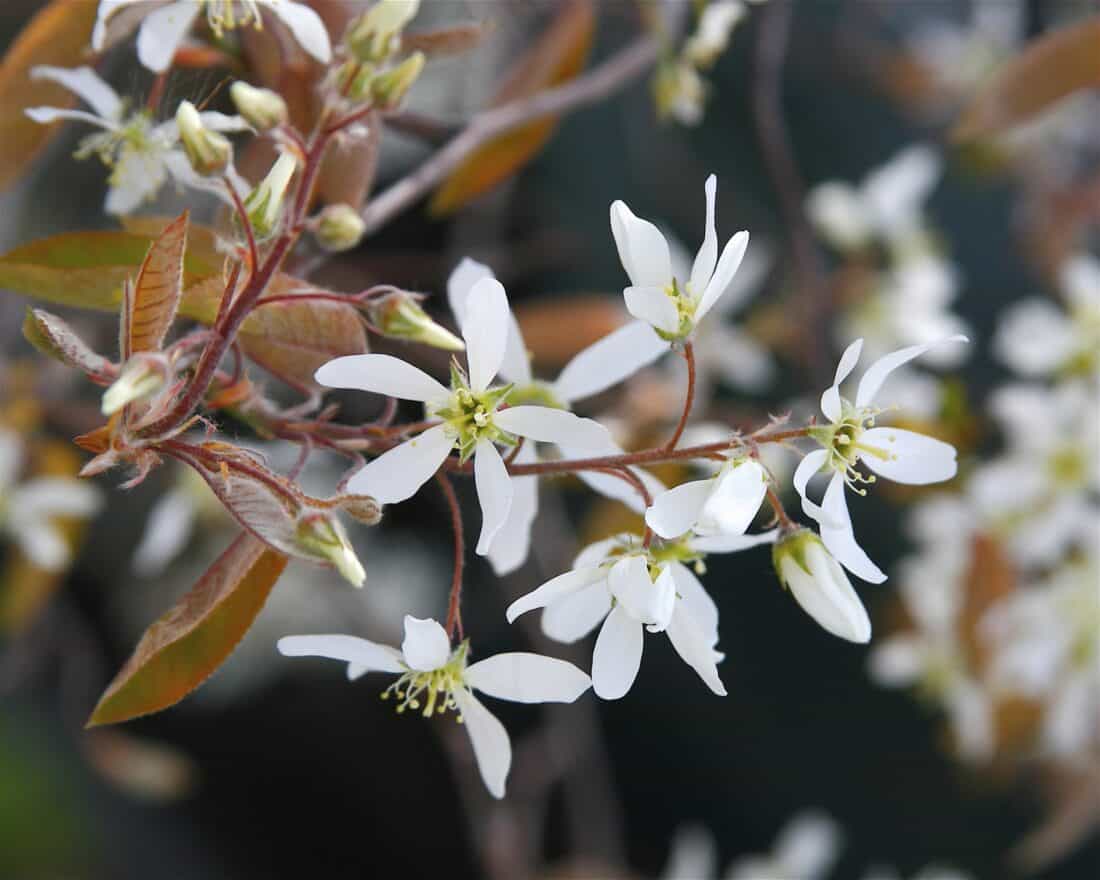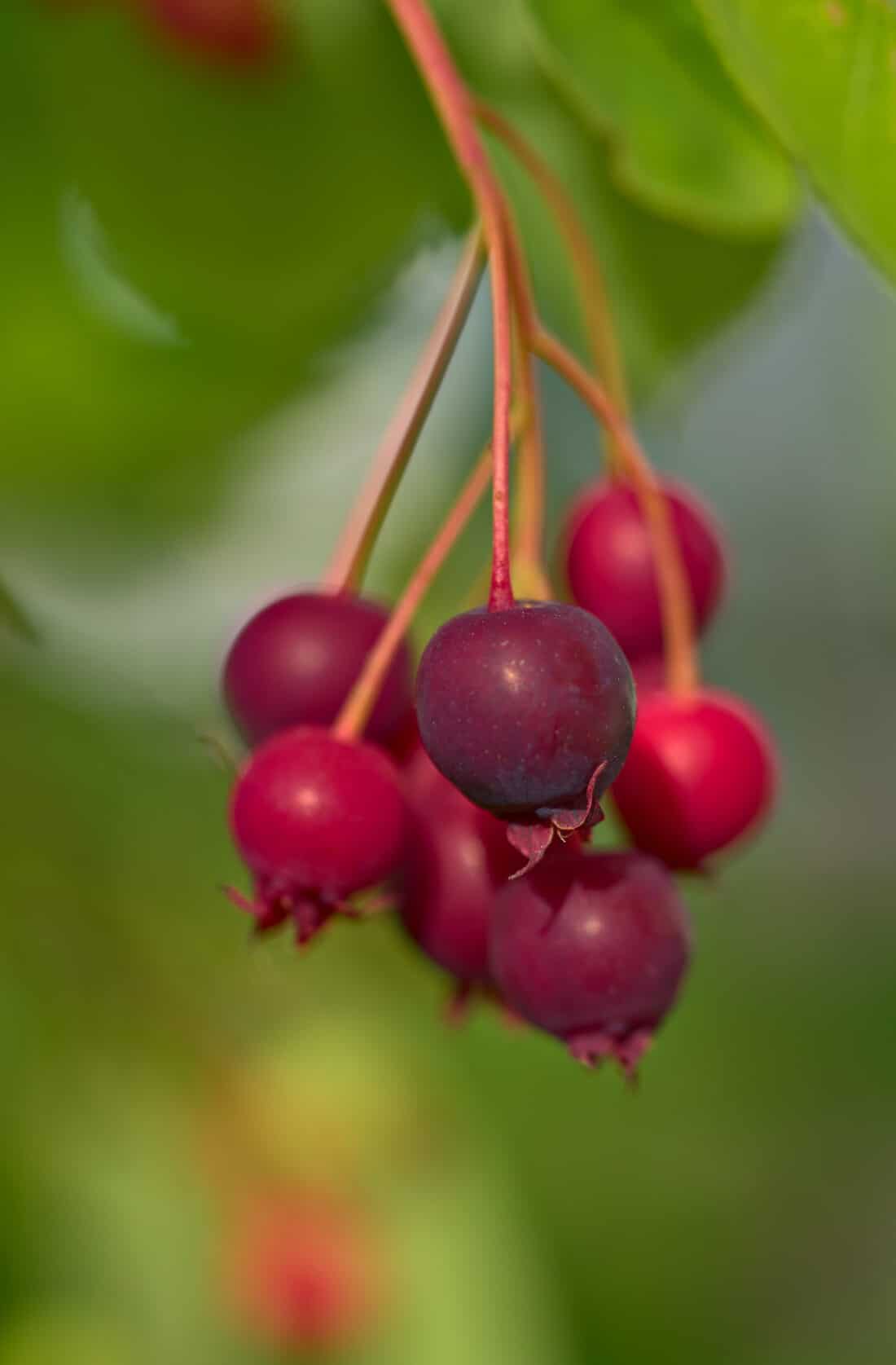Rodney’s thoughts: I will start by admitting that I have never been impressed with the Allegheny Serviceberry tree (Amelanchier laevis).
The first serviceberry or shadblow (Amelanchier spp.) that I encountered was in Pennsylvania in 1996. I was told that it was an impressive, native tree that was being promoted as a replacement for the over-used Bradford pear.
When it flowered, well, um, I actually forgot ever seeing it in flower. It was so underwhelming. Since that time, I have seen other serviceberry trees and written them off because of short flowering time or early leaf drop in the summer.
Do you adore Amelanchier laevis? Let’s discuss Allegheny Serviceberry.


A New Respect For Allegheny Serviceberry – Amelanchier laevis
My view has changed this spring in Maine. I am not sure whether it is Maine’s climate or the particular selections we have at CMBG, but the flowering this year has been outstanding.
Planted along our education center is Amelanchier x grandiflora ‘Cole’s Select.’ They started flowering a couple of weeks ago and are still going strong. The form is somewhat upright, and the trees are around 20′ in height, making for a remarkable display of white flowers this May.
Amelanchier x grandiflora is a naturally occurring hybrid between the two east coast US native species: A. arborea and A. laevis. The result is a small, upright, native, spring flowering, edible fruit-producing, and brilliant fall-colored tree.
Our cultivar, ‘Cole’s Select’ has dark green leaves that turn a brilliant reddish-orange in the fall. The form is perfect for the small landscape; it reminds me of a small crepe myrtle or upright Japanese maple.
Other Cultivars of Amelanchier worth considering
There are other cultivars of Amelanchier x grandiflora available, including ‘Autumn Brilliance,‘ ‘Princess Diana,’ ‘Robin Hill,’ and ‘Cumulus.’ We have ‘Autumn Brilliance’ and ‘Robin Hill’ planted in the gardens here in Boothbay and I would definitely like to add some more in the future based upon the performance this spring of ‘Cole’s Select.’
Do you have serviceberry planted in your garden? How is it growing for you?
–Rodney

2023 Amelanchier Growing Garden Notes From Rochelle:
At our first monthly Live Garden Design Discussion of 2024 (access is part of my online courses). Someone asked what I thought of Amelanchier, and I had to be honest – I, too, have not been the biggest fan. But I also have some positive caveats.
- I’ve specified and planted Amelanchier (I don’t recall the exact varieties) for many clients and never had a complaint. I’m also recalling one specific project where we planted a whole property line row of them. It is local, and I haven’t driven by the site in years. When the weather warms, I’ll go check them out and see how their spring bloom is – or even if the current owners still have them. (I’ll update this with photos if there are some notes).
- I planted two Amalanchier in my own garden about ten years ago – and I have been completely underwhelmed. I have given them a wide berth to be slow starts because I bought them for nearly nothing as they were in the pile of trash trees you sometimes find at the nursery. The ones where they nearly give them to you because they are often unmarked (though I knew these to be some variety of Allegheny Serviceberry), horribly weedy, and with pot-bound roots. That was these – and despite my best care, they never recovered. Also, one of them was attacked by my voles this summer, and half of the already paltry shrub was eaten from the roots and died. I have resolved to replace both of them in 2024.
Trying out Juneberries – Amelanchier canadensis
I am going to keep my eye out for good-looking trees this spring. I think I will give Cole’s select or one of the other cultivars that Rodney mentions a try, and I am also curious to try Amelanchier canadensis. Amalanchier canadensis is a variety that needs wetter soil (I have a spot like that), and it does not grow as tall. It is more of a large multistemmed shrub than a tree – but it also comes with the added bonus of harvestable fruit.
I’ve specifically got my eye on the Spring glory Serviceberry Tree – Amelanchier canadensis ‘Sprizam‘. It is marketed as great all around for spring and fall colors (with flowers and leaves), as well as Juneberry fruit. If you are also interested in Juneberries – check out this article from Cornell University. I thought it was interesting.
If you’ve grown a particular variety of Amelanchier that you think is worth the hype – let us know – I’d like to consider it as a replacement for the other tree that is going to get removed this year.
-Rochelle
I think the reason serviceberries can be underwhelming is that they get cedar apple rust and defoliate early. It doesn’t kill them, but I have not seen any with pretty fall foliage, so I think they get relegated to woodland settings rather than specimens, and they fend for themselves and become multi stemmed weedy looking shrub-trees.
Yours sound so pretty and so garden-worthy, but you must not have eastern red cedars (junipers — the host) around nearby. I have a lot of wild junipers with the icky gelatinous orange rust spores, so planting a serviceberry is asking for a plant that will live and grow but never look that great. The ones you describe sound so enchanting!
My first introduction to Serviceberry was on campus where they were used in a garden and around the seating areas. When they were in bloom it was truly amazing, I was not aware of their problems. I will certainly research them further before adding them to my yard or garden.
I love serviceberry! Out here in the middle of Oregon we don’t have any problems with them and I love their elegant spring flowers and they have some of the best fall color (except for Mountain Ash). I am glad you have found their beauty!